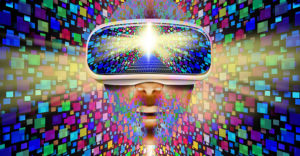It is the beginning of a new year, and I dearly hope 2023 works out better than I currently think it will. Economically, we are in a bit of trouble, but some amazing technologies are coming to market this year that I’m looking forward to seeing.
CES, which kicks off shortly, will be the first big showcase of what’s coming — and from the pre-briefings I’ve seen, there will be a ton of cool stuff coming out this year.
Let’s explore a lot of that this week. We’ll get to my first Product of the Week for 2023 next week because I ran out of room in this column.
The 2023 Economy Looks Ugly
The last few years haven’t been great for several reasons, but mostly because governments didn’t deal with the pandemic well. Shutdowns crippled the supply chain, and when people started coming back, they wanted to buy stuff, which created an imbalance between supply and demand that had government agencies doing terrible things to interest rates.
It looks as if 2023 will see those chickens come home to roost. We’ll have an inauspicious mix of buyers with no money but improved manufacturing capacity leading to excessive inventory and, I expect, accelerating layoffs.
This should be a time when vendors ramp up marketing for demand generation to capture as much of the shrinking market as possible. Still, most will ignore this Business 101 lesson and reduce demand generation instead, allowing those firms that did audit Business 101 to gain a significant share as a result, at the expense of those that cut marketing during this time.
I think 2023 will again showcase that demand management should have both a carrot and a stick, the stick being high-interest rates on borrowing and the carrot being high-interest rates on savings. More effort is needed to shift perceptions so that buying behavior changes rapidly enough to mitigate the problem.
Communicating effectively with citizens so that they modify their behavior timely would, in addition to interest rate changes, have a more significant, faster impact on this class of problem which is mainly behavior-based in the first place.
Wars
China will remain a problem largely because its Covid responses are failing, and its government is unwilling to ask for help. China’s vaccines appear ineffective, but instead of seeking foreign vaccines that work, they struggle with being overwhelmed by sick people.
These circumstances may force an ill-advised war with Taiwan to distract from the domestic issues at home. But the lack of vaccine effectiveness points to a more significant problem in China and many other countries: the tendency to cover up issues rather than address them. All this suggests that China’s military, like Russia’s, may not be able to perform as well as Chinese leadership expects.
While the dynamics of war with Taiwan may seem to be very different from the one in Ukraine, covering up problems is consistent between Russia and China, potentially creating a similar stalemate between the countries. However, while the conflict continues, manufacturing in Taiwan and exports from China will crater and likely create a new and even bigger supply chain problem.
Companies are moving aggressively to mitigate their exposure, but most programs I’ve seen, like the CHIPS Act, won’t mature until closer to 2025, leaving us exposed in 2023. Ukraine is not expected to be able to recover its manufacturing capacity until two to five years after the war there ends. Since that has yet to occur, there will likely continue to be shortages tied to Ukrainian manufacturing through 2023 — such as ASIC chips which remain a critical part of most electronics, including cars.
Electric Cars
2023 will be the year that electric charging capabilities will increase dramatically, and we’ll begin to see the second-generation battery and engine technology hit the market with increased range and performance. However, we still will be short of making electric cars a proper replacement for gas vehicles when it comes to distance.
Nonetheless, we will begin to see the release of next-generation electric cars and more enhancements to driver assistance and in-car entertainment capabilities. However, it still looks like the most significant changes will likely occur in 2024 for the 2025 line of cars due to launch that year.
Think of 2023 as the last year of the current generation electrics and 2024 as the beginning wave of the next generation electric cars, most likely to be released as 2025 models.
As a result, in 2023, I’d favor buying used instead of new in anticipation of the more considerable changes for the 2025 model year releases. The exception would be cars from vendors like Rivian and Lucid, which are already creating cars we could term next generation, recognizing there are unique risks to buying cutting-edge technology.
Personal Flying Vehicles
We should see an impressive number of electric flying personal recreational vehicles hit the market. Some of these have already been showing up.
Basically, they use drone technology scaled up to fly humans, resulting in some relatively easy builds and virtually no skills needed to fly the things under a recreational flying license. Where I live, we get regular complaints about folks flying ultralight vehicles over houses which I’m sure will increase with these new vehicles.
Still, they look like a ton of fun. I’m tempted to pick one up myself as a toy that would work both in summer and, assuming I can handle the cold, winter as the near-perfect all-terrain vehicle. Just don’t run out of electricity at altitude.
Personal Computers
PCs will undergo screen modifications, from multiple to rolling screens, throughout the year. Rolling screens were teased during several announcements recently.
The idea of being able to magically extend your screen vertically or horizontally (doing both at the same time is beyond us now) could be a game changer for those of us who undergo screen size envy with current laptops.
Expect more efficient chargers, a much greater focus on sustainability overall, and a continued effort to find that sweet spot for PCs as a service (PCaaS).
Look for advancements in recycling and customization this year as the industry slogs through what is likely to be a particularly soft sales period due to the massive overbuying that occurred during the last several years.
Smartphones
A new Apple iPhone contender is due, but I’ll talk about that when it launches.
Expect to see rollable displays show up before year-end and improvements in camera software focused on making you look better and helping you create better-looking avatars to come bundled with the latest phones.
Real-time video streaming enhancements and features will improve, and we should get our first look at the next generation of AI-based digital assistants before year’s end.
Conversational AI has improved since Siri launched substantially, and we should begin seeing the resulting benefits across most platforms next year.
Look for wireless charging enhancements in premium line phones as the year progresses.
Videoconferencing and Collaboration
The confusion surrounding whether people will remain home or return to the office really messed up this segment, and I don’t see the light at the end of the tunnel yet.
As a result, solutions will be diverse, with some focused on improving the experience in large rooms and others in the home.
Expect far better camera tracking with cameras, better noise isolation with microphones and speakers, and significantly stronger audience monitoring tools, which will likely get those playing video games during Zoom calls in trouble (yes, we know you do this).
We’ll likely see at least one vendor develop a unique way to solve the camera placement problem with built-in and aftermarket cameras.
Metaverse
The metaverse is a bit of a mess, thanks largely to Meta’s initial implementation of it. However, this is ironic because once it matures, the metaverse will have the ability to convey a vision of the future better than any prior technology.
There’s a chance that Meta will finally figure this out and, instead of showcasing where it is, begin to showcase what it will be. Nvidia has been doing this for some time in the commercial space which, while compelling, isn’t yet touching most of us.
As a result, if Meta doesn’t step up to communicating a vision, the consumer side of the metaverse will go into decline in 2023, waiting for a company to blend the power of the metaverse into its ability to convey its benefits and the compelling nature of what it will become, rather than the disappointment of what it is currently.
AI and Robotics
2023 will be a huge year for AI and robotics. I’m grouping these technologies because this will be the year when AI-driven personal robotics expands well beyond the initial wave of the robotic vacuum cleaner.
I’m expecting robotic security solutions, robotic snow blowers, and even increasing numbers of robotic personal assistants. We’ll also see more robotic bartenders, french fry machines, and the first realistic prototypes of automated fast-food restaurants.
While we’ll still be at the very beginning of the coming robotic wave, by the end of 2023, we should have a much better idea of where this technology is going and how quickly it will overwhelm us with robotic choices.
One area that will see a massive increase in the use of artificial intelligence is the health care industry. AI will be more widely used to create new remedies and cures and provide conversational AI interfaces for patients needing help more quickly than the ever-more limited medical staff can provide. I’m just getting over the flu as I write this, so I’m particularly looking forward to this medical AI improvement.
Televisions
2023 will be the true emergence of 8K TVs, and we’ll see more affordable rollable display TVs in limited runs. We’ve had 8K and rollable TVs before but mostly in prototype form. Both technologies are now moving into production, allowing them to come to market at the high end.
We’ll have a reduced problem with 8Ks compared to the 4K TVs that preceded them due to the improvement in upscales. While these sets will garner a lot of attention, sales will likely be hampered by cost until prices become far more reasonable than I expect in 2023. However, it is possible that by the end of the year, at least one of these two technologies will have gone mainstream.
I think it’s more likely that 2025 will be the year when 8K and rollable display TVs show their potential. It will take at least that long to get to a critical mass of content and rollable screen manufacturing capacity to provide the convergence of content and technology as a value to the buyer.
Wrapping Up
These predictions are far from exhaustive. I didn’t mention the pivot from air to rail travel in Europe that will accelerate next year, the potential failure of Twitter due to what I personally foresee as Elon Musk’s intentionally bad choice for a new CEO, or advances in both broadcast power and microgrids next year. We also have the renewed promise of fusion power, though I expect that will wait until the second half of the decade to move into broad trials.
Until now, I didn’t mention advances in robotic humans like robotic companions because I still find them creepy, autonomous vehicles because they aren’t due in mass until 2025, or robotic pets, which also will become more pronounced in future years. Farming advancements with robotics and vertical farms, advances in disease detection, and the increasing challenge of keeping private things private will also be ongoing trends.
Overall, I expect 2023 to be particularly difficult for companies that either don’t understand what market they are in or pull back too hard on demand generation funding, allowing their competitors to move around them.
Think of the year like musical chairs but with money instead of chairs. There will be a smaller pool of available spending dollars, and firms that don’t fight for every penny will likely fail.
I wish the best for you and yours in the new year, though just getting through 2023 may be the realistically achievable goal for what could be a challenging year for most.

























































